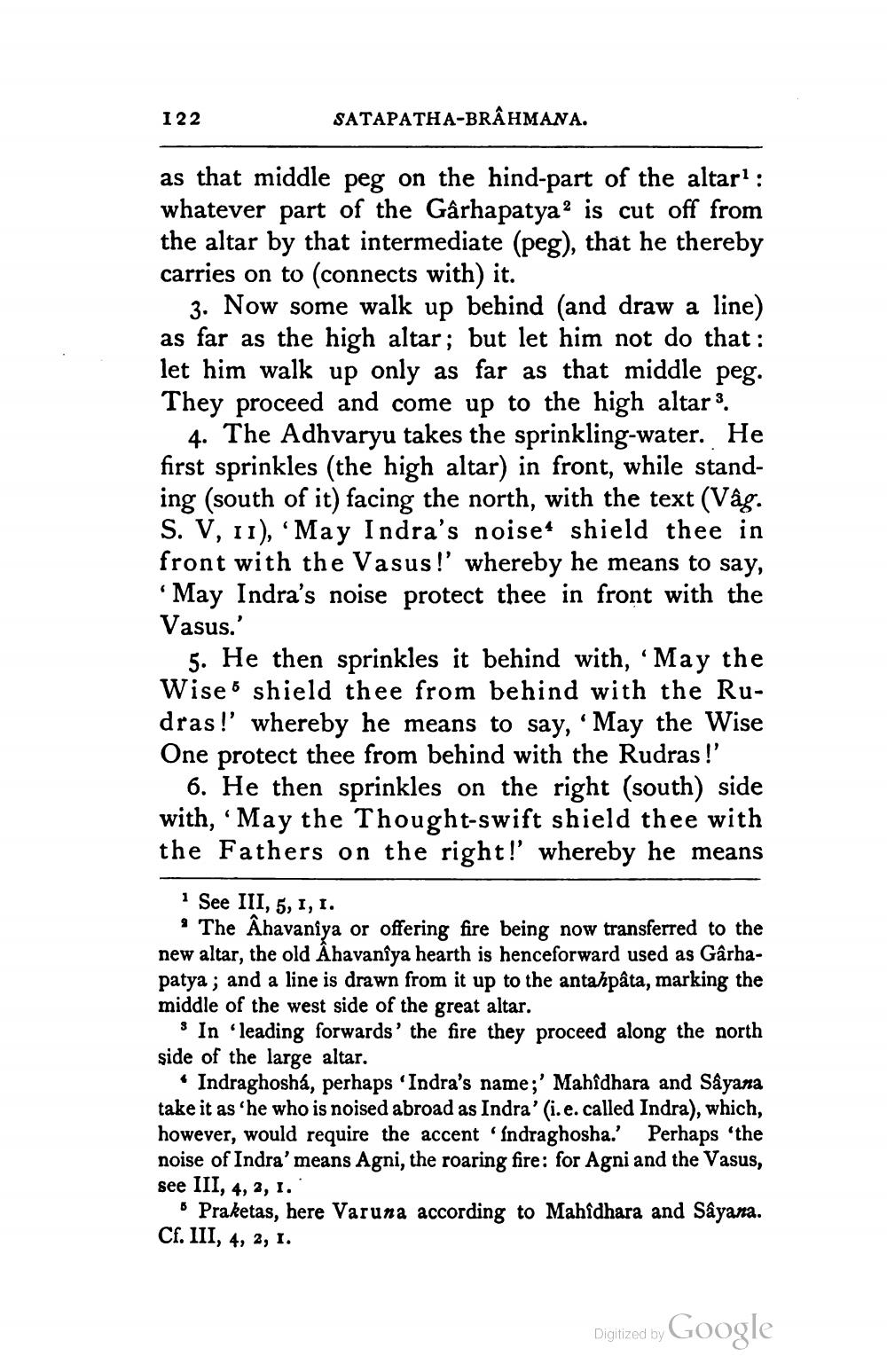________________
I 22
SATAPATHA-BRAHMANA.
as that middle peg on the hind-part of the altar? : whatever part of the Gârhapatya? is cut off from the altar by that intermediate (peg), that he thereby carries on to connects with) it.
3. Now some walk up behind (and draw a line) as far as the high altar; but let him not do that: let him walk up only as far as that middle peg. They proceed and come up to the high altar 3.
4. The Adhvaryu takes the sprinkling-water. He first sprinkles (the high altar) in front, while standing (south of it) facing the north, with the text (Vâg. S. V, 11), May Indra's noiset shield thee in front with the Vasus!' whereby he means to say, “May Indra's noise protect thee in front with the Vasus.'
5. He then sprinkles it behind with, May the Wise ó shield thee from behind with the Rudras!' whereby he means to say, "May the Wise One protect thee from behind with the Rudras !'
6. He then sprinkles on the right (south) side with, 'May the Thought-swift shield thee with the Fathers on the right!' whereby he means
1 See III, 5, 1, 1.
• The Ahavaniya or offering fire being now transferred to the new altar, the old Âhavanîya hearth is henceforward used as Gârhapatya ; and a line is drawn from it up to the antahpâta, marking the middle of the west side of the great altar.
s In leading forwards the fire they proceed along the north side of the large altar.
• Indraghosha, perhaps Indra's name;' Mahîdhara and Sayana take it as 'he who is noised abroad as Indra' (i.e. called Indra), which, however, would require the accent 'Indraghosha. Perhaps the noise of Indra' means Agni, the roaring fire: for Agni and the Vasus, see III, 4, 2, 1.
Praketas, here Varuna according to Mahîdhara and Sâyana. Cf. III, 4, 2, 1.
Digitized by Google




